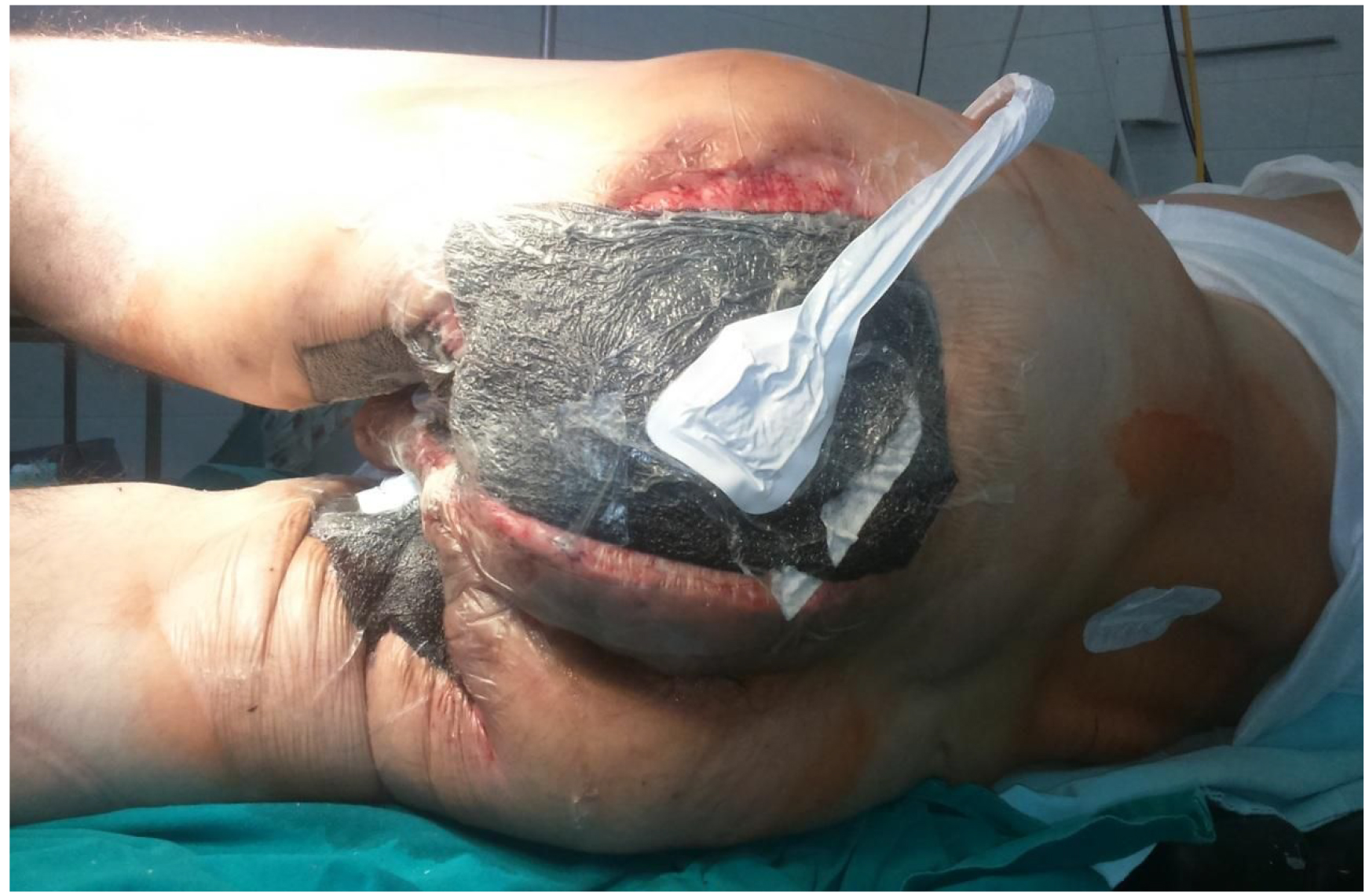From fistula to disability. Severe infection due to anal fistula treated with NPWT — case report
Abstract
Negative pressure wound therapy (NPWT) is increasingly used to facilitate wound healing. There are various types of wounds - primarily closed or open, clean or infected, superficial or deep-penetrating, open abdomen, enteroatmospheric fistulae, burns etc. and almost each of these might be healed with the help of NPWT. It seems to be the most beneficial in hard-to-heal wounds. Using sub-atmospheric pressure, we can significantly accelerate the separating of necrotized tissues, stop inflammation,promote granulation, and drain the difficult wounds effectively. Typically, an optimum pressure range of –80 to –125 mmHg is administered. Few contraindications for the use of NPWT are challenged by new reports showing benefits in situations where NPWT was previously forbidden, (i.e. malignancy or bleeding in the wound), increasing the quality of life and avoiding wound infections. There is a growing body of data for new methods of treating anal fistula in the literature, but there is no data for elective treatment with NPWT. Attempts to develop NPWT protocols are problematic due to the diversity of cases and the frequent need for a personalized therapeutic approach.
This paper presents a 56-year-old male patient suffering from severe, purulent inflammation of groin, inguinal, anal and left gluteal sites; septic, malnourished, depressed, in worsening general status for 3 years. Computed tomography and colonoscopy did not reveal pathology except for purulent inflammation. At the beginning, the patient was treated symptomatically with antibiotics, colostomy and surgical excision facilitated with NPWT. Anal fistulae were found after a large excision. A medium-thick skin transplantation was performed and well accepted in over 90%. This was a 103-day-long treatment with numerous complications. Finally, the wound healed completely and the patient was restored to his full physical and mental abilities.
NPWT used in this case allowed for inflammation control, extensive wound healing and closing the anal fistula with no recurrence.

Copyright (c) 2019 Mateusz Szyntor

This work is licensed under a Creative Commons Attribution 4.0 International License.
Authors who publish with this journal agree to the following terms:
- Authors retain copyright and grant the journal right of first publication with the work simultaneously licensed under a Creative Commons Attribution License that allows others to share the work with an acknowledgement of the work's authorship and initial publication in this journal.
- Authors are able to enter into separate, additional contractual arrangements for the non-exclusive distribution of the journal's published version of the work (e.g., post it to an institutional repository or publish it in a book), with an acknowledgement of its initial publication in this journal.
- Authors are permitted and encouraged to post their work online (e.g., in institutional repositories or on their website) prior to and during the submission process, as it can lead to productive exchanges, as well as earlier and greater citation of published work (See The Effect of Open Access).
We require authors to sign a Publication Agreement prior to publication of the manuscript in NPWTJ. The link to this form may be found below.
PUBLICATION AGREEMENT FORM











